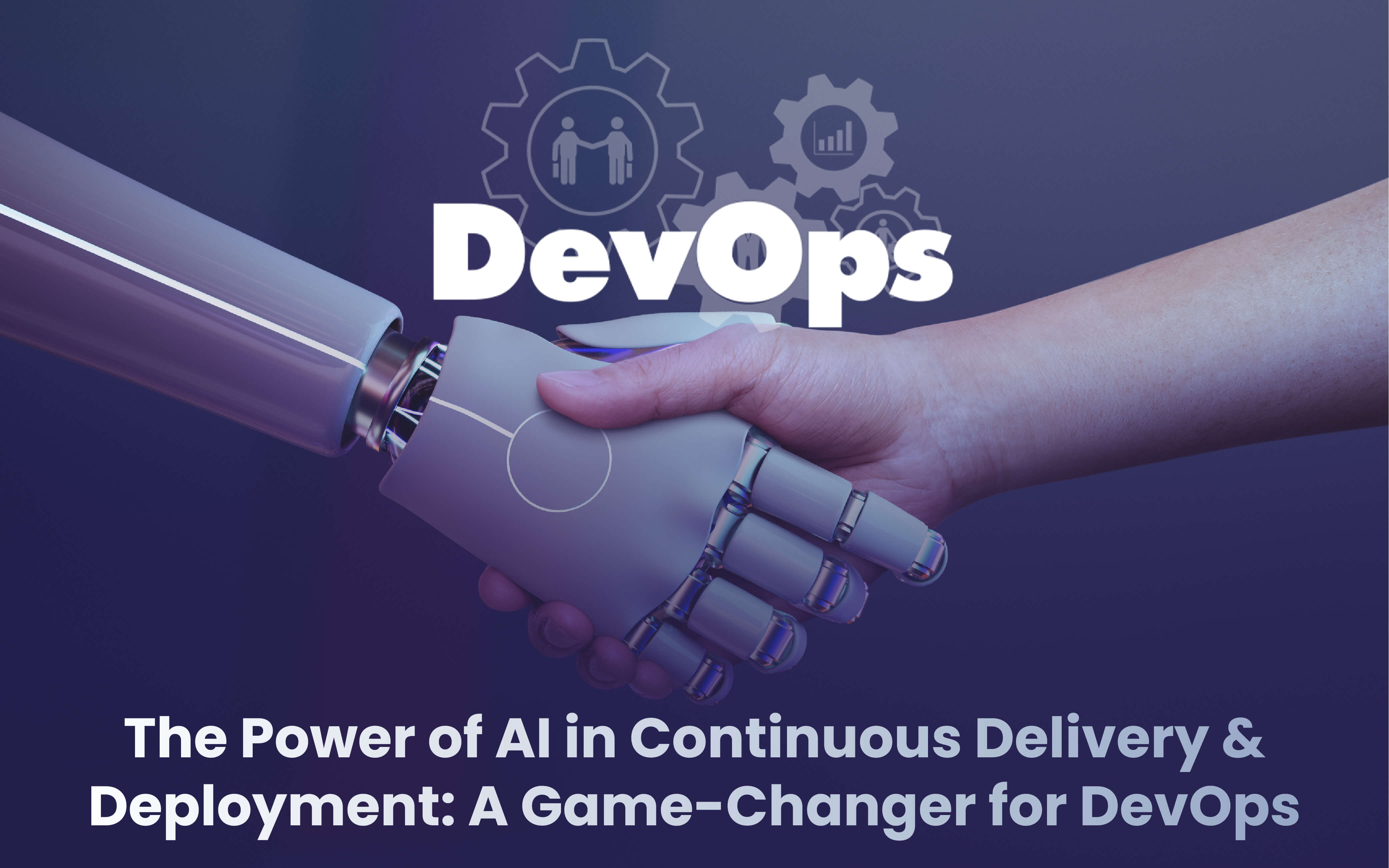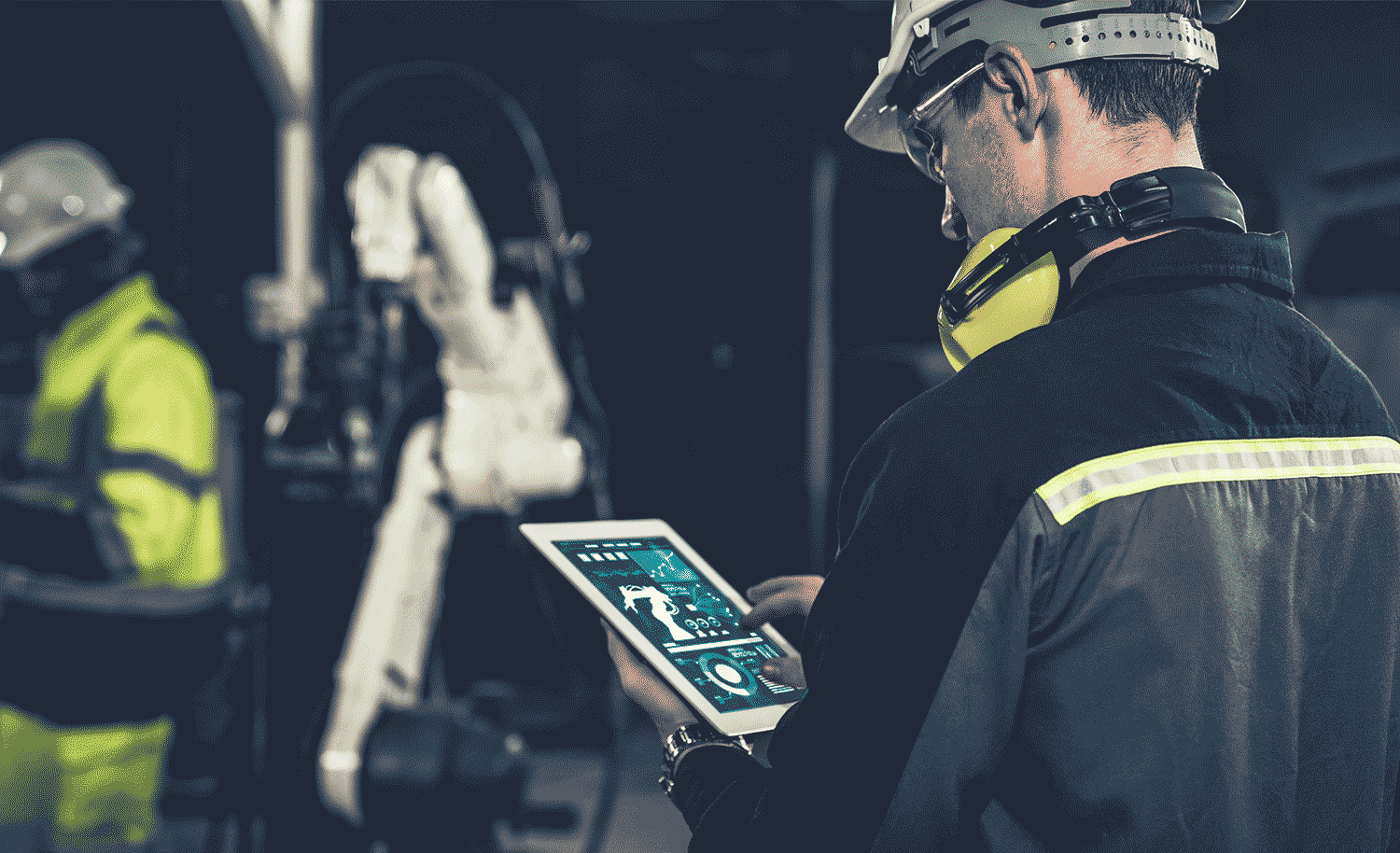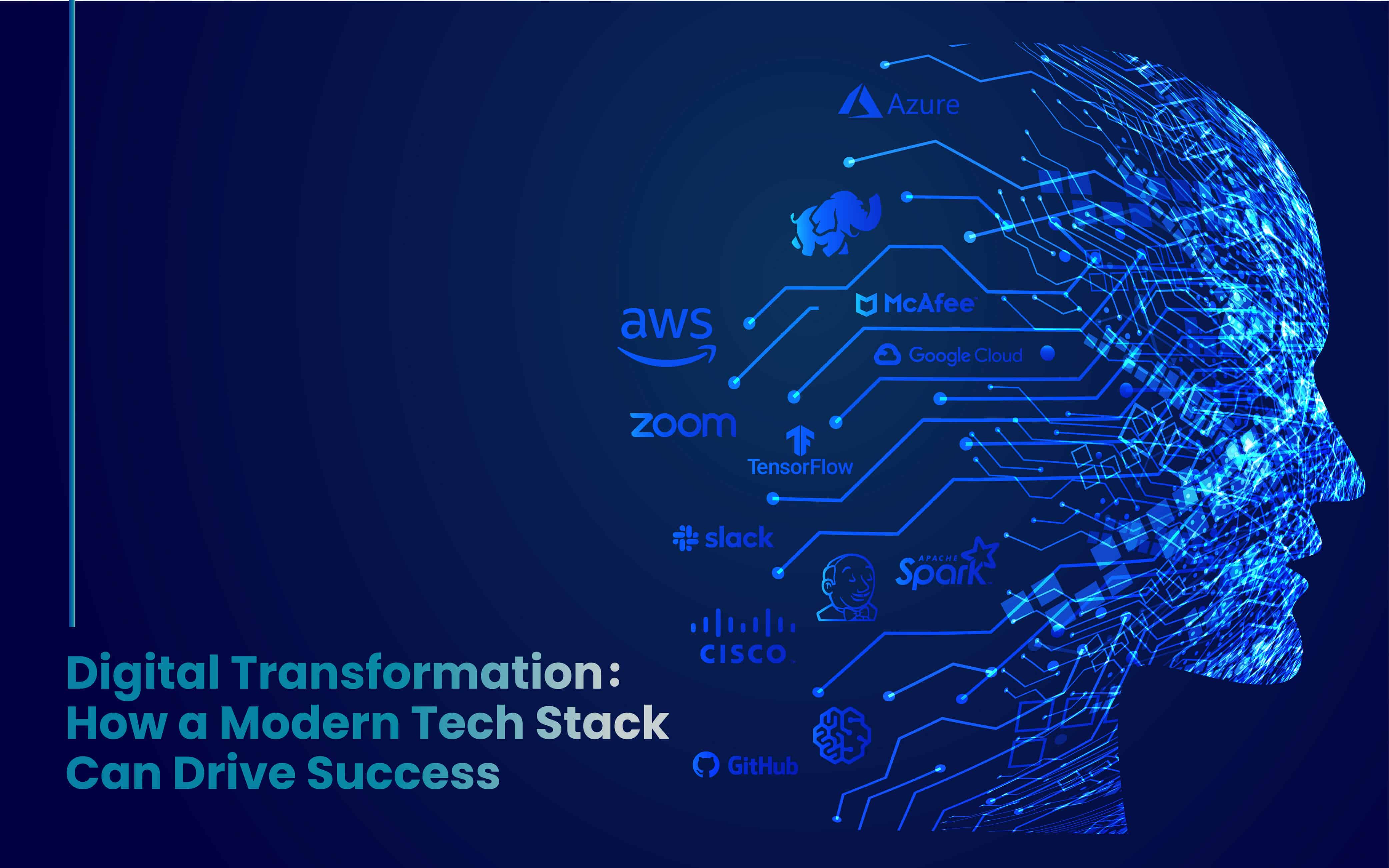Blogs
To know about all things Digitisation and Innovation read our blogs here.
DevOps
AI in Continuous Delivery & Deployment: A Game-Changer for DevOps
SID Global Solutions
6 July 2023

Introduction
In today’s fast-paced software development landscape, organizations strive to deliver software changes quickly and reliably. This need for speed and efficiency has given rise to the concepts of continuous delivery and continuous deployment. However, as software complexity increases, manual processes become increasingly challenging to scale. This is where the power of artificial intelligence (AI) comes into play. Harnessing AI in continuous delivery and deployment can significantly transform DevOps practices, enabling organizations to streamline their software delivery pipelines, reduce errors, and improve overall efficiency.
Also Read: Driving Transformation: Key Enterprise IT Challenges and Solutions
Understanding Continuous Delivery and Deployment
- Defining Continuous Delivery: Continuous delivery is a software development approach that focuses on the frequent and automated release of software changes. It aims to make the deployment process reliable and efficient, allowing organizations to deliver software updates in small increments. Continuous delivery involves various practices such as version control, automated testing, continuous integration, and deployment pipelines.
- Exploring Continuous Deployment: Continuous deployment takes the concept of continuous delivery a step further. It involves automatically deploying changes to production environments without human intervention. By leveraging automation, continuous deployment enables organizations to rapidly deliver new features and updates to end-users. This approach relies on robust testing, monitoring, and rollbacks to ensure the stability and reliability of the deployed software.
- The Role of DevOps in Continuous Delivery and Deployment: DevOps plays a crucial role in enabling successful continuous delivery and deployment. DevOps emphasizes collaboration and communication between development and operations teams, creating a culture of shared responsibility. This collaboration ensures that the software development and deployment processes are integrated seamlessly, leading to more efficient and reliable delivery practices. DevOps practices, such as infrastructure as code and configuration management, are essential for automating and managing the infrastructure required for continuous delivery and deployment.
AI in Continuous Delivery and Deployment
Unleashing the Potential of AI: AI refers to the simulation of human intelligence in machines that are programmed to perform tasks that typically require human intelligence, such as decision-making, pattern recognition, and problem-solving. When applied to continuous delivery and deployment, AI can transform the way software is developed, tested, and deployed. By automating repetitive tasks, AI frees up valuable time for development and operations teams, allowing them to focus on more complex and critical aspects of the software delivery process.
AI Techniques and Algorithms for Continuous Delivery and Deployment
AI encompasses various techniques and algorithms that can be leveraged in continuous delivery and deployment. Machine learning algorithms, for instance, can analyze large volumes of data to identify patterns and make predictions, helping optimize software release processes. Natural language processing techniques can enable chatbots and virtual assistants to interact with development teams, providing real-time support and troubleshooting. Automation frameworks powered by AI can streamline the entire delivery pipeline, automating tasks such as testing, code reviews, and deployment.
AI-based techniques and algorithms can assist in several areas of continuous delivery and deployment, including:
- Test Automation: AI can revolutionize test automation by enabling intelligent testing practices. Automated test generation techniques can analyze code changes and generate test cases automatically, improving test coverage. AI algorithms can prioritize and select test cases based on their impact and risk, optimizing testing efforts. Self-healing tests can automatically detect and fix test failures, reducing the need for manual intervention and ensuring the stability of the testing process.
- Release Management: AI can help optimize release management processes by analyzing historical data, performance metrics, and user feedback. AI algorithms can provide insights on the best time to release software changes, the most suitable deployment strategies, and potential risks or conflicts. This assists teams in making informed decisions, improving the overall efficiency and effectiveness of the release management process.
- Incident Management and Troubleshooting: AI can assist in incident management and troubleshooting by analyzing logs, monitoring data, and system metrics. AI algorithms can identify patterns and anomalies, alerting teams to potential issues and providing recommendations for resolution. Chatbots and virtual assistants powered by AI can interact with development teams, providing real-time support and guidance during incident resolution, leading to faster and more efficient troubleshooting.
Also Read: Next-gen Applications: Embracing AI APIs for Intelligent Solutions
Benefits and Challenges of AI in Continuous Delivery and Deployment
Advantages of AI in Continuous Delivery and Deployment
The integration of AI in continuous delivery and deployment brings several benefits:
- Increased Speed: AI-driven automation accelerates the software delivery process, reducing time-to-market for new features and bug fixes. By automating various stages of the delivery pipeline, such as testing and deployment, AI reduces manual effort and enables faster feedback loops.
- Improved Accuracy: AI algorithms can analyze vast amounts of data with precision, resulting in accurate decision-making and error detection. AI-powered testing can identify complex issues that may be missed by traditional testing approaches, improving the quality of software releases.
- Enhanced Decision-Making: AI can provide insights and recommendations based on historical data, helping teams make informed decisions regarding software changes and deployments. By leveraging AI’s ability to analyze patterns and trends, organizations can optimize their release strategies and prioritize features based on user needs and preferences.
- Reduced Human Error: By automating repetitive and error-prone tasks, AI minimizes the risk of human-induced errors during the software delivery process. Automated testing, code reviews, and deployment processes powered by AI can significantly reduce manual errors and improve the overall reliability of software releases.
Addressing Challenges and Concerns
While AI presents significant opportunities for continuous delivery and deployment, there are also challenges and concerns to consider:
- Data Quality: AI algorithms heavily rely on high-quality and relevant data. Ensuring the availability of accurate and diverse data is crucial for successful AI implementation. Data collection, preprocessing, and quality assurance processes should be established to maintain the integrity of the data used for training and decision-making.
- Bias and Ethics: AI algorithms may inadvertently introduce biases or ethical concerns, such as discrimination or privacy violations. It is important to develop AI systems that are fair, transparent, and respectful of user privacy. Regular monitoring and evaluation of AI systems should be performed to identify and mitigate any biases or ethical concerns that may arise.
- Skillset and Expertise: Adopting AI in continuous delivery and deployment requires teams to develop new skills and expertise. Training and upskilling team members to effectively work with AI technologies is essential. Organizations should invest in training programs and provide resources to support their teams’ learning and growth in AI-related domains.
To mitigate these challenges, organizations should focus on data governance, ethical AI practices, and providing training and resources to empower teams in their AI journey.
Also Read: Building a Secure Future: Leveraging AI for DevSecOps Success
AI-Driven Continuous Delivery and Deployment Practices
Intelligent Test Automation
AI can revolutionize test automation by enabling intelligent testing practices:
- Automated Test Generation: AI can generate test cases automatically by analyzing the software’s behavior, identifying edge cases, and creating comprehensive test scenarios. AI algorithms can leverage machine learning techniques to continuously improve the quality and coverage of generated test cases.
- Intelligent Test Case Selection: AI algorithms can prioritize and select test cases based on their impact and risk, optimizing test coverage and reducing testing time. By focusing on high-risk areas and critical functionality, organizations can ensure that testing efforts are maximized and aligned with business goals.
- Self-Healing Tests: AI-powered frameworks can automatically detect and fix test failures, reducing the need for manual intervention and ensuring the stability of the testing process. Self-healing tests leverage machine learning algorithms to analyze failures, identify potential fixes or workarounds, and apply them automatically, minimizing the time and effort required for debugging and troubleshooting.
By incorporating AI in test automation, organizations can enhance the quality of their software and significantly reduce the time and effort required for testing.
Intelligent Release Management
AI can optimize release management processes by providing valuable insights and recommendations:
- Predictive Analytics: AI algorithms can analyze historical data, performance metrics, and user feedback to predict the optimal time for software releases. By considering factors such as user demand, system stability, and business objectives, AI can help teams make data-driven release decisions.
- Risk Assessment: AI can assess potential risks and conflicts that may arise during software deployments. By analyzing dependencies, system configurations, and past incidents, AI algorithms can identify potential bottlenecks and suggest mitigation strategies to ensure smooth deployments.
- Release Optimization: AI can optimize the release process by recommending the most suitable deployment strategies based on factors such as code complexity, impact on system performance, and user feedback. AI algorithms can also prioritize features and changes based on user preferences, maximizing the value delivered to end-users.
Integrating AI in release management empowers organizations to make informed decisions, minimize risks, and optimize the software delivery process.
Also Read: The Future of DevOps: How AI is Shaping Transformations
AI-Driven Incident Management and Troubleshooting
AI can assist in incident management and troubleshooting by leveraging advanced analytics and automation:
- Anomaly Detection: AI algorithms can analyze system logs, performance metrics, and user behavior to detect anomalies and potential issues. By continuously monitoring system health and identifying deviations from normal patterns, AI can alert teams to potential incidents before they escalate.
- Automated Incident Resolution: AI-powered chatbots and virtual assistants can interact with development teams during incident resolution, providing real-time support and guidance. By analyzing historical incident data and knowledge bases, AI can suggest potential solutions and guide teams through troubleshooting steps, leading to faster resolution times.
- Root Cause Analysis: AI can assist in identifying the root causes of incidents by analyzing logs, system metrics, and historical incident data. By leveraging pattern recognition and correlation techniques, AI algorithms can help teams understand the underlying factors contributing to incidents, enabling them to implement preventive measures.
AI-driven incident management and troubleshooting enhance the efficiency and effectiveness of the resolution process, reducing downtime and minimizing the impact on end-users.
Conclusion
The power of AI in continuous delivery and deployment cannot be underestimated. By leveraging AI techniques and algorithms, organizations can unlock new levels of efficiency, accuracy, and speed in their software delivery processes. However, successful implementation requires careful consideration of data quality, ethical considerations, and skills development. With the right approach and mindset, harnessing AI in continuous delivery and deployment can truly be a game-changer for DevOps practices, enabling organizations to stay competitive in an increasingly fast-paced digital landscape.









